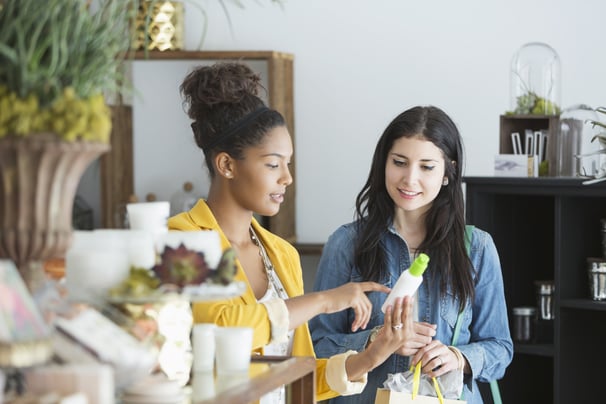In this day and age, customer loyalty is becoming scarce. With such saturated markets, there is intense competition among brands for customers. Supply far outstrips demand, and with the increase in the number of sales channels, buyers are being bombarded with advertising everywhere they turn. Not only does this make them less trusting of advertising, it makes it harder for businesses to stand out with their advertising.
It’s no wonder consumers find it difficult to sort through all this “noise” and find brands they truly like. Instead, most customers are now impulse buyers, grabbing the first thing in the store that fits their needs. There is one main issue with this: it means that they have no brand loyalty, easily substituting one brand with another. However, the benefit of impulse buying means that in store promotions are more effective and can better increase your chance of attracting customers and increasing purchase volume.
How to Build Customer Loyalty With In-Store Promotions
In store promotions are a way for manufacturers, traders, and buyers to establish direct contact. This personal connection is important because customers will remember brands that they have had direct interaction with. This makes in store promotions more memorable than any other type of advertising. In addition, market research has found that in store promos are the best method of convincing customers to purchase a product (Patrik Zupančić). Why? Because customers want to be able to test a product without any risk to them.
This is especially important for products in the beauty, food, and beverage industries. For example, department stores like Macy’s have counters for brands like Lancome and Chanel where customers can try any product they want and even take home a sample of the ones that they like. Sales reps are available to show customers how to apply the product, as well as to recommend products that they might like. This is especially persuasive because customers are not only trying the product, they are becoming more informed about it.
Give Shoppers a Hands-On Experience
The ability to test products is also relevant in the food and beverage industries. Customers do not want to purchase something that they wouldn’t enjoy. By offering product sampling, customers can try products free of cost before purchasing. In addition, consumers love freebies. They will automatically be drawn to your table while doing their grocery shopping. If your product appeals to them, they often will stop and chat with your sales rep.
This is your opportunity to teach them more about the product, its benefits, and to convince them to purchase it. It is important to have the product on the table so that the customer can grab it right there if they would like to make a purchase. You can also direct the customer to the section of the store where your product is located so that they can check out the other products you offer.
In store demos also allow you a chance to cross-sell. Consider this - you have a table for customers to sample your all-natural body lotion. You can include on the table your all-natural body wash as well. This tactic gives you the opportunity to sell more products, but your reps should gauge how ready the customer is to make a purchase before cross-selling. Sometimes the customer will decide not to purchase anything if offered additional products.
/iStock-519010065-min.jpg?width=811&name=iStock-519010065-min.jpg)
The 3 types of In-Store Promotions:
-
Sales: This is your chance to present your product to your target market. A good first sale promotion will attract customers to make an initial purchase and learn about your brand, and good subsequent promotions will result in repeat purchases.
-
Development: This type of promotion is for you to test a new product before you launch in the market. Based on customer satisfaction and response, you can see if you need to adjust the product or if it’s ready to be launched.
-
Occasional: These promotions are for special events like fairs, grand openings, or “local nights” often hosted by grocery stores like Whole Foods. There will be many other brands at these events, so your brand needs to truly stand out here.
The goal of in store promotions should be to attract customers to make an initial purchase of your product and to instigate repeat purchases. By offering discounts (especially on buying in bulk or buy one get one free), you can even increase the purchase volume. The most lucrative goal in the long-run is to create customer and brand loyalty. In store promotions expose customers to your brand, distinguishing it from the rest of the brands out there.
Once customers recognize your brand and are informed about it, they are more likely to make a purchase, especially if they have tested your product. After a purchase, if you continue to actively remind your customer of your brand through subsequent promotions or other customer retention techniques, they will be repeat purchasers. Through this, they will develop a strong brand loyalty and reach for your product on the shelf, even though substitutes are available.
Customer loyalty can be hard to come by these days, and in store promotions are an important facet of building and developing that loyalty. You will find that with an increase in customer loyalty comes an increase in revenue and brand satisfaction.


/iStock-519010065-min.jpg?width=811&name=iStock-519010065-min.jpg)


